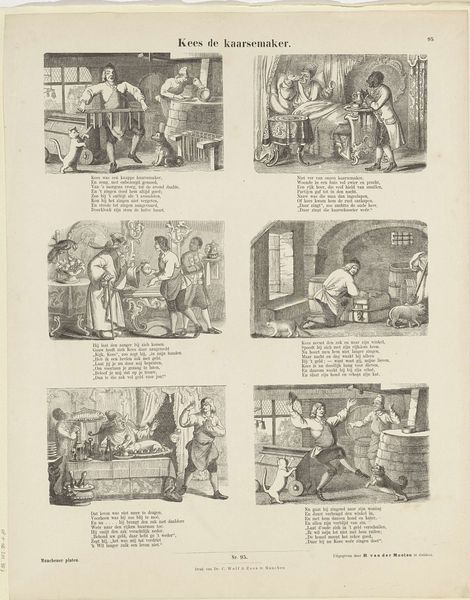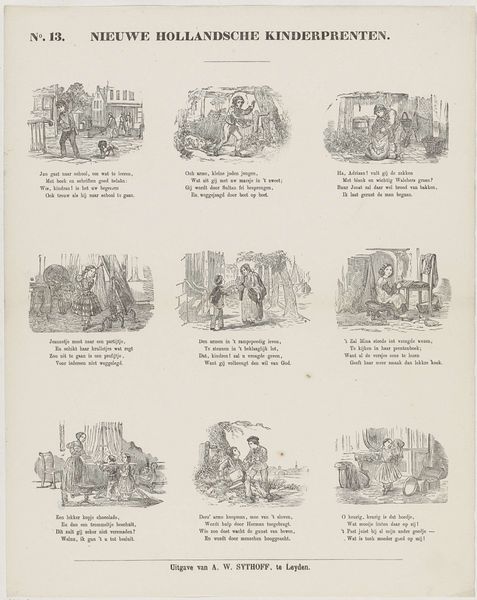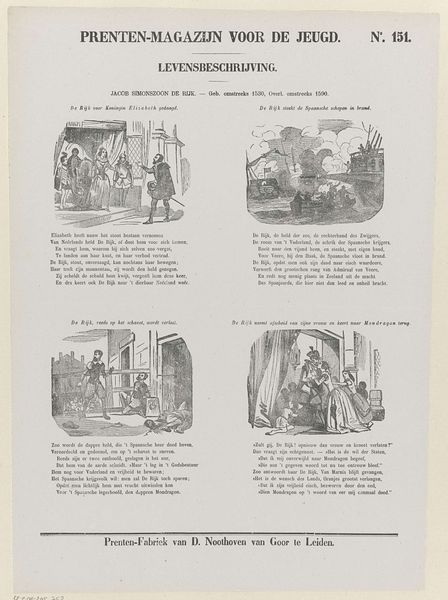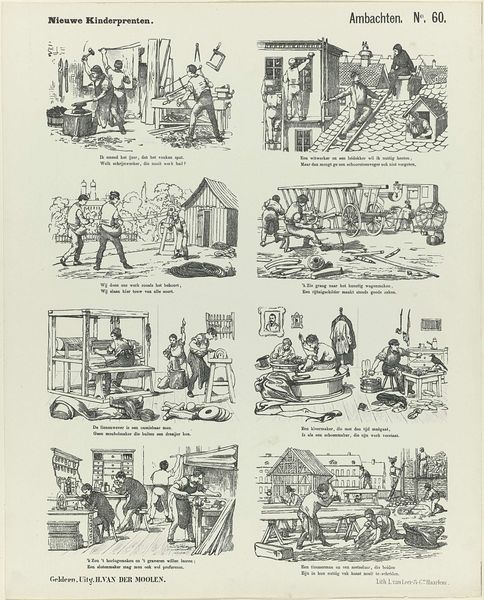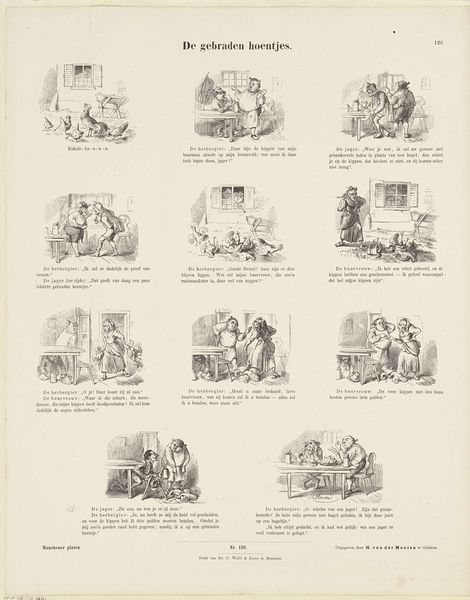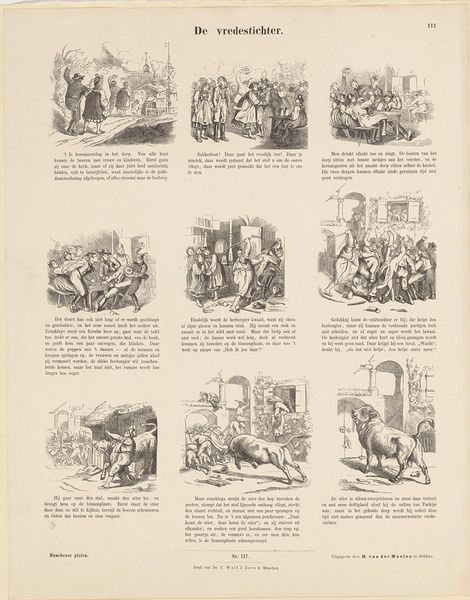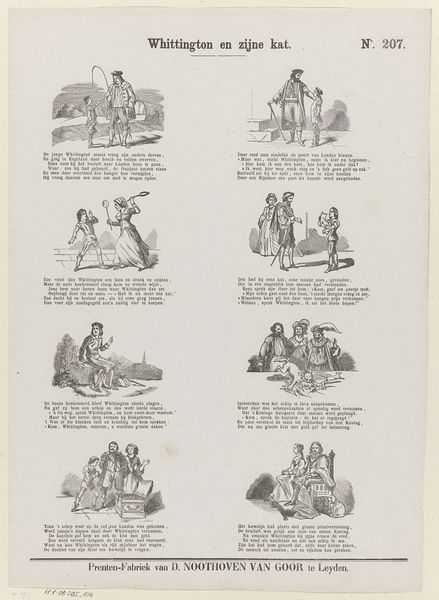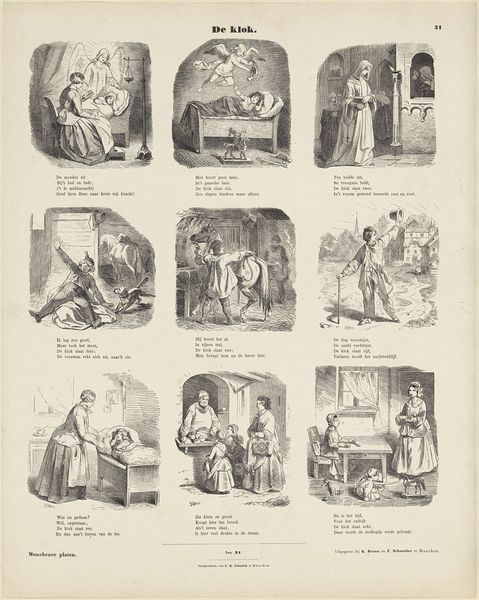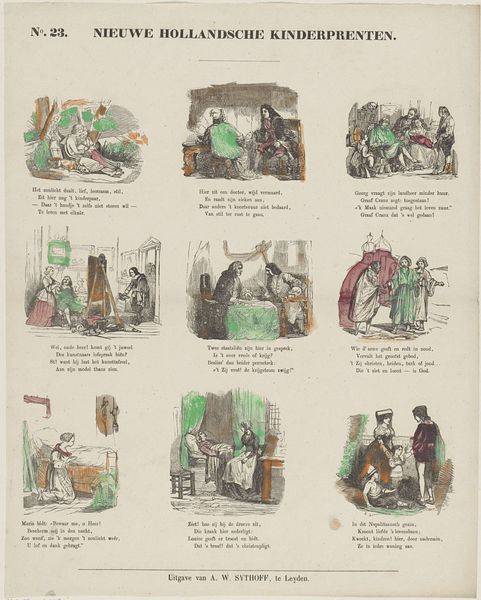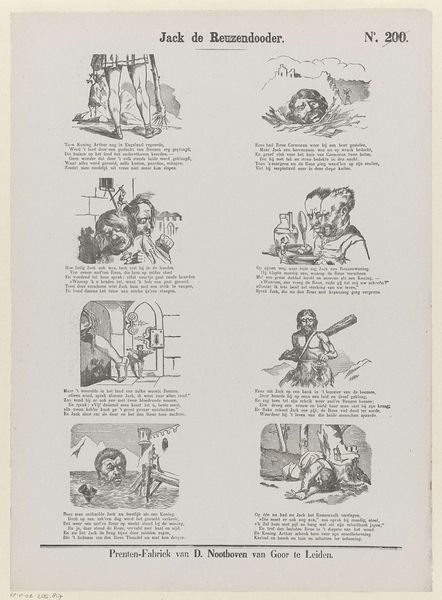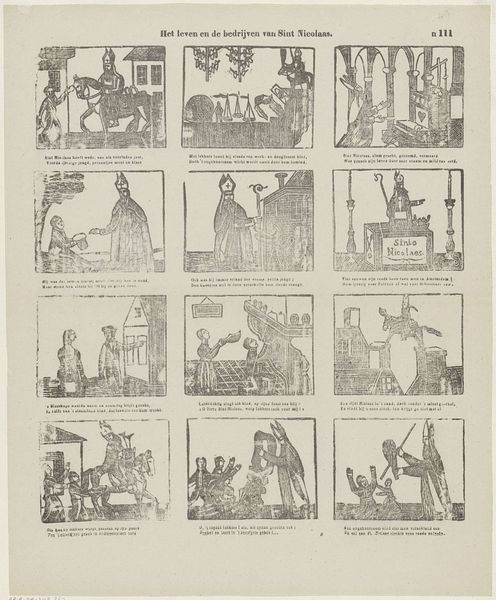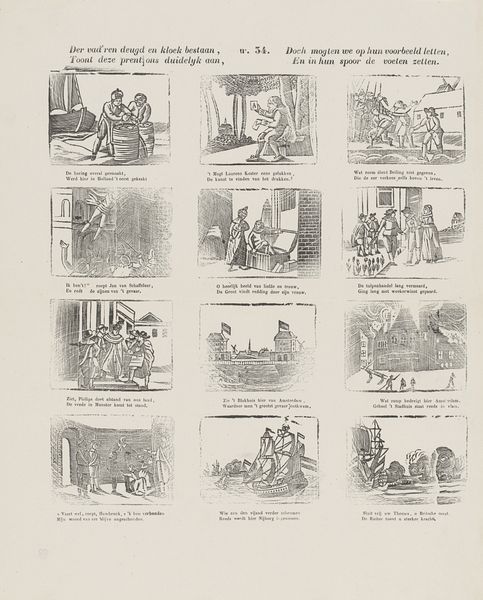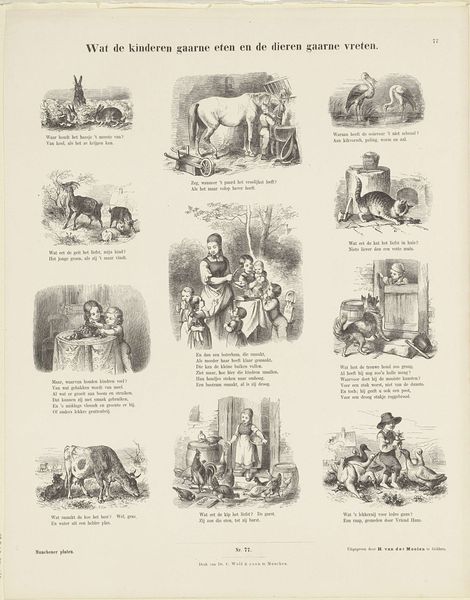![Eer ons het lichtje gaat begeven [(...)] by Albertus Willem Sijthoff](/_next/image?url=https%3A%2F%2Fd2w8kbdekdi1gv.cloudfront.net%2FeyJidWNrZXQiOiAiYXJ0ZXJhLWltYWdlcy1idWNrZXQiLCAia2V5IjogImFydHdvcmtzLzI0MmUxOTYxLTg3ZDktNDdmOC1iNmMwLThjNDI3ZDNhOGU3MS8yNDJlMTk2MS04N2Q5LTQ3ZjgtYjZjMC04YzQyN2QzYThlNzFfZnVsbC5qcGciLCAiZWRpdHMiOiB7InJlc2l6ZSI6IHsid2lkdGgiOiAxOTIwLCAiaGVpZ2h0IjogMTkyMCwgImZpdCI6ICJpbnNpZGUifX19&w=3840&q=75)
graphic-art, print, paper, engraving
#
graphic-art
#
narrative-art
#
dutch-golden-age
# print
#
pencil sketch
#
paper
#
genre-painting
#
engraving
Dimensions: height 394 mm, width 314 mm
Copyright: Rijks Museum: Open Domain
Curator: This is an engraving titled "Eer ons het lichtje gaat begeven" by Albertus Willem Sijthoff, dating from 1861 to 1929. It’s currently held at the Rijksmuseum. The overall composition is striking, with a series of narrative scenes laid out in a grid. The detail achieved through engraving on paper is fascinating. How do you interpret its visual language? Editor: I find it really intriguing how the artist used printmaking, traditionally a means for widespread communication, to present these miniature, almost private, glimpses into everyday life. I’m also curious about the text accompanying each vignette; it seems integral to understanding the work. Thinking about printmaking as a method of mass production makes me wonder about the intended audience and how this artwork circulated. Were these aimed at a specific social class, perhaps informing or even shaping certain moral or social values? Curator: Exactly. Let's consider the materials used. Cheap paper, reproducible engraving. This suggests a market for mass consumption, implying that these weren't precious objects for the wealthy elite, but rather accessible items for a wider segment of the population. Could the “Kinderprenten,” indicated in the title, point to the commercial intent to moralize education, subtly guiding children? Considering this through a materialist lens reframes it – we're not just seeing scenes, but the transmission of social values. Editor: So, by looking at the print's accessibility through its materials and production process, we move beyond analyzing it solely for its artistic merit and delve into its social function. So, the themes presented here are less about individual stories and more about social commentary through cheap material? Curator: Precisely. It urges us to look beyond aesthetics and instead at the labor, materials, and social context embedded within the object. It's not simply a print; it's a piece of social history made visible through its means of production. Editor: That's a great perspective. I never really considered how the materials themselves could be so indicative of an artwork's intended role in society. Curator: Analyzing art through its materiality definitely enriches our understanding beyond formal elements.
Comments
No comments
Be the first to comment and join the conversation on the ultimate creative platform.
